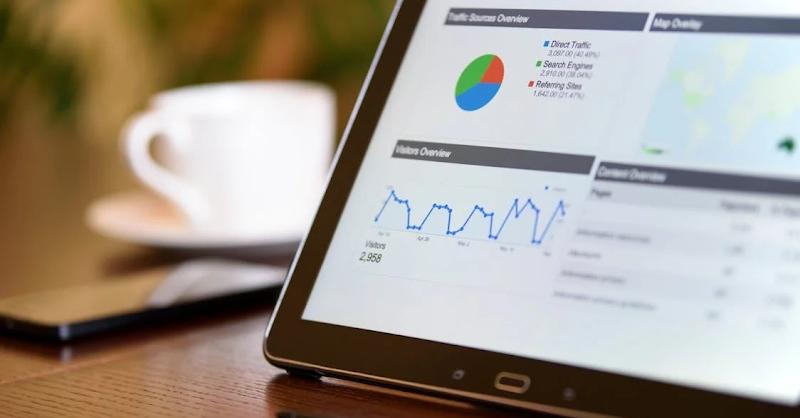The power of data analytics is revolutionizing the future of healthcare. The importance of sophisticated analytics is growing as healthcare businesses work to improve patient outcomes, save costs, and simplify processes. Healthcare analytics are experiencing a significant shift because of new technology and creative data approaches. This guide explores the key trends shaping the industry, offering insights into how data-driven approaches are set to redefine healthcare delivery in the years to come.
The Rise of Predictive Analytics in Patient Care:
The use of predictive analytics in healthcare is growing quickly because it allows medical professionals to identify and treat health problems before they become more serious. Through sophisticated algorithms and historical data, predictive models can recognize trends and forecast future health occurrences. By acting proactively, medical professionals might avert problems and enhance patient outcomes by acting early.
In the treatment of chronic diseases, when early identification and intervention can greatly improve quality of life, predictive analytics is very helpful. Furthermore, it facilitates customized medicine by customizing treatment regimens to each patient’s unique profile, maximizing the effectiveness of medication.
Enhancing Operational Efficiency through Data-Driven Decision Making:
Healthcare organizations place a high priority on operational efficiency, and data analytics is essential for reducing procedures and improving resource allocation. Healthcare administrators can learn more about patient flow, process bottlenecks, and resource use by examining data from several sources. They can use this information to make informed decisions that save expenses and improve operational efficiency. Predictive analytics, for example, can estimate patient admission rates, which enables hospitals to manage personnel levels and bed occupancy more efficiently. Furthermore, data-driven insights can enhance supply chain management, guaranteeing that medical equipment and supplies are accessible without being overstocked when required.
The Impact of Artificial Intelligence and Machine Learning:
Healthcare analytics are being revolutionized by artificial intelligence (AI) and machine learning (ML), which make it possible to handle enormous volumes of data at previously unheard-of speeds and accuracy. These tools can evaluate large, complicated datasets to find patterns that are hidden, identify abnormalities, and provide useful insights. AI-powered technologies help in the diagnosis of diseases, prognostication of patient outcomes, and recommendation of tailored treatment regimens in clinical contexts.
For example, artificial intelligence systems can examine medical images and identify early indicators of diseases like cancer, enabling prompt therapies. Additionally, readmissions can be predicted by machine learning models, which gives healthcare professionals the ability to implement plans that shorten hospital stays and increase recovery times.
Leveraging Big Data for Population Health Management:
Big data analytics offers a complete perspective of health patterns and outcomes across big patient groups, which is crucial for managing population health. As suggested by the American Data Network, aggregating and analyzing data from diverse sources such as electronic health records claims data and social determinants of health allows healthcare organizations to identify at-risk populations and develop targeted interventions.
The goal of population health management is to reduce healthcare inequities and enhance community health outcomes. Healthcare practitioners can monitor public health efforts, track disease prevalence, and assess the efficacy of preventative interventions with the use of big data. It also helps value-based care models by providing information on the affordability and quality of treatment.
The Role of Data Integration and Interoperability:
To fully use healthcare analytics, data integration and interoperability are crucial. Interoperability is the capacity of various systems and platforms to communicate data seamlessly with one another, guaranteeing that medical professionals have access to complete patient records. Integrating data from many sources into a single framework allows for comprehensive analysis. Achieving interoperability and data integration is crucial for creating a complete picture of patient health, facilitating coordinated care, and reducing the risk of errors. In order to facilitate the easy sharing and interpretation of data across various systems, healthcare organizations need to use standardized data formats and protocols.
Ensuring Data Security and Privacy in Healthcare Analytics:
As healthcare analytics relies on vast amounts of sensitive patient data, ensuring data security and privacy is paramount. To safeguard data from breaches and illegal access, healthcare organizations need to have strong security measures in place. This covers frequent security assessments, access limitations, and encryption. To protect patient information and maintain confidence, compliance with regulations like the Health Insurance Portability and Accountability Act (HIPAA) is crucial.
In addition, companies need to cultivate a privacy-conscious culture and train employees on data security best practices. In addition to protecting patients, maintaining data security and privacy raises the legitimacy and reliability of healthcare analytics.
Conclusion:
The future of healthcare analytics is bright, driven by advancements in predictive analytics, AI, big data, and interoperability. These developments are transforming the healthcare sector and making it possible for institutions to provide more effective, individualized, and proactive treatment. Healthcare systems will need to incorporate data analytics as they develop to improve patient outcomes and operational effectiveness. By embracing these innovations, healthcare providers can navigate the complexities of modern healthcare and achieve sustainable improvements in care delivery.






